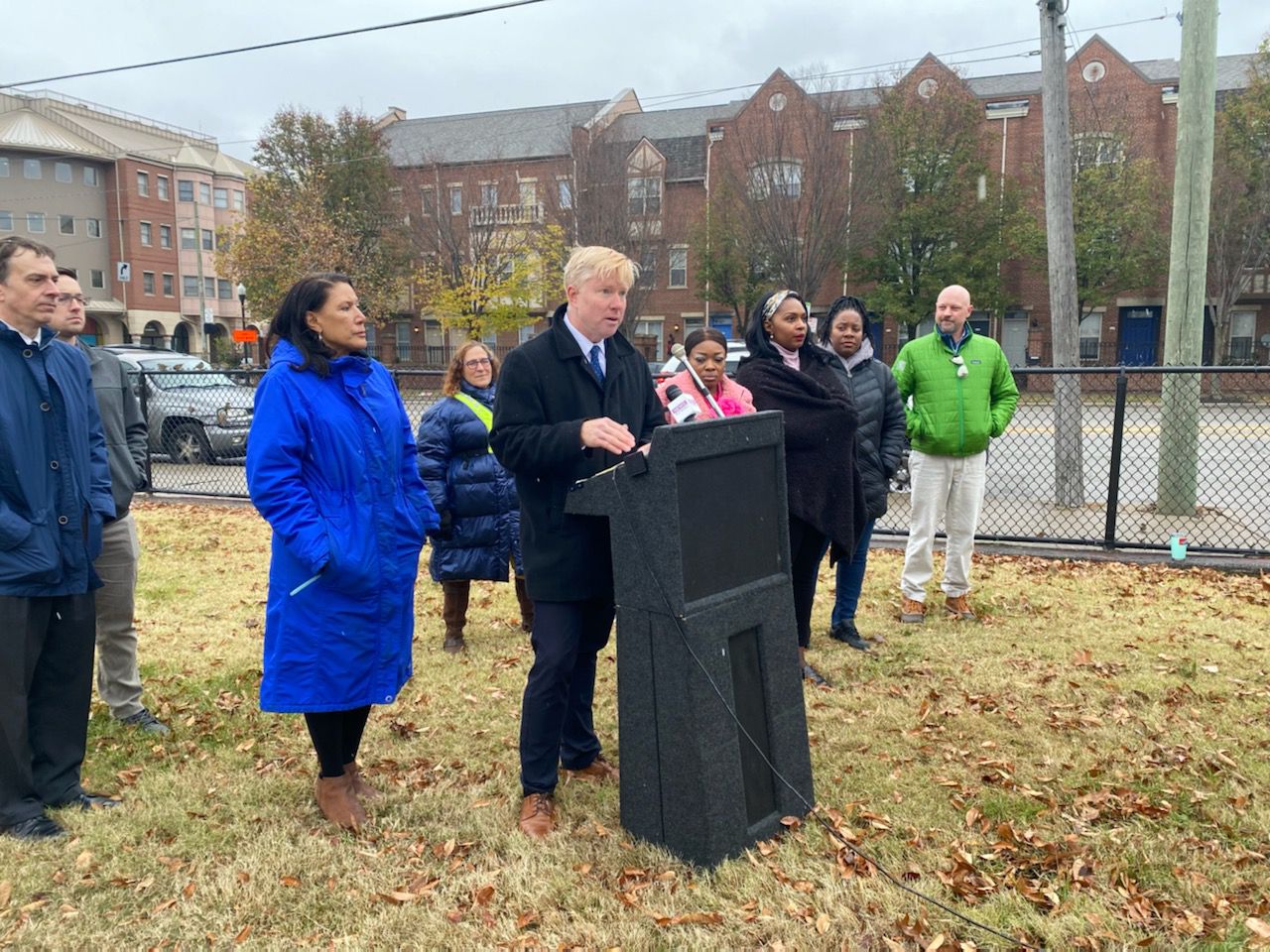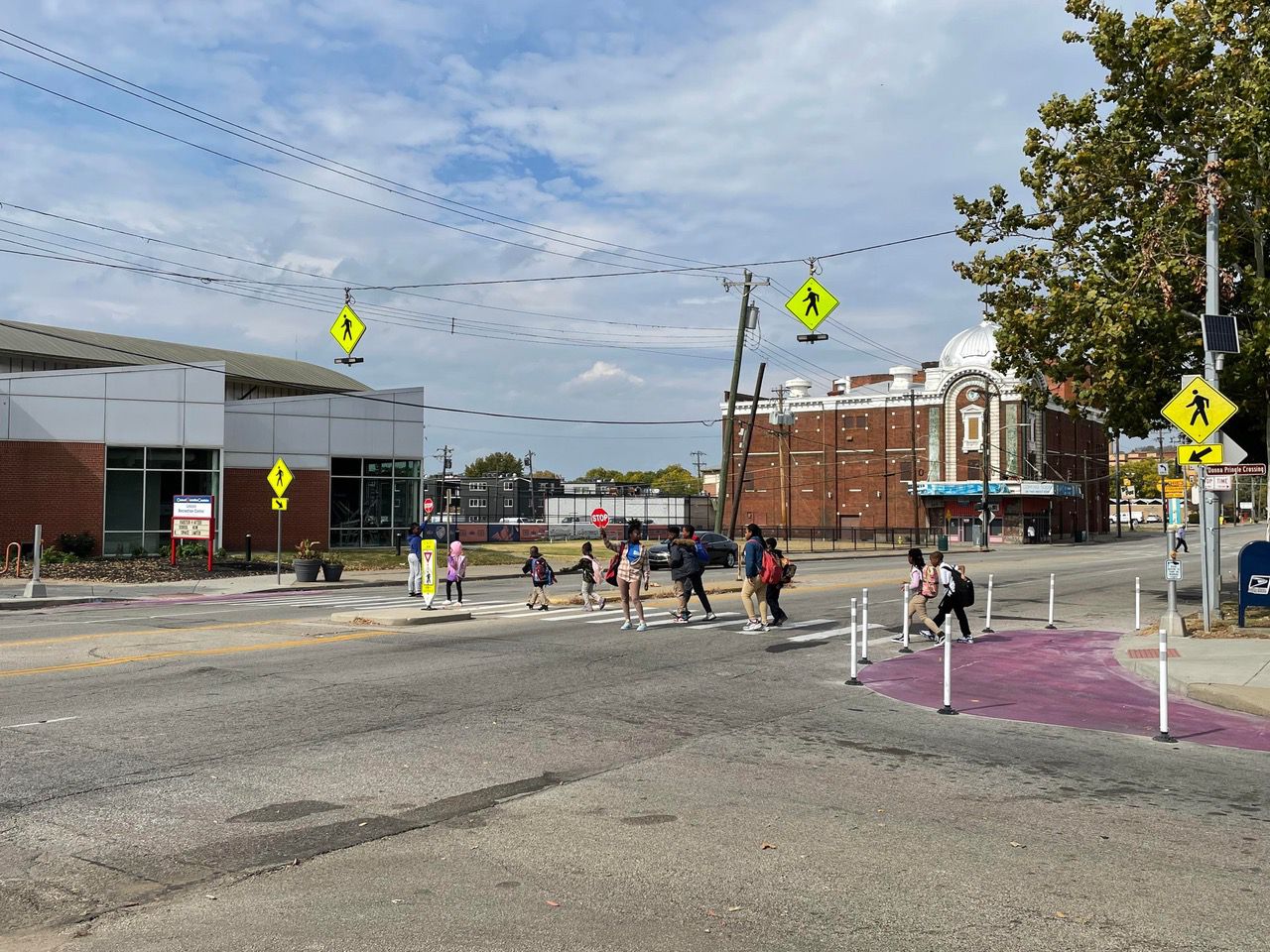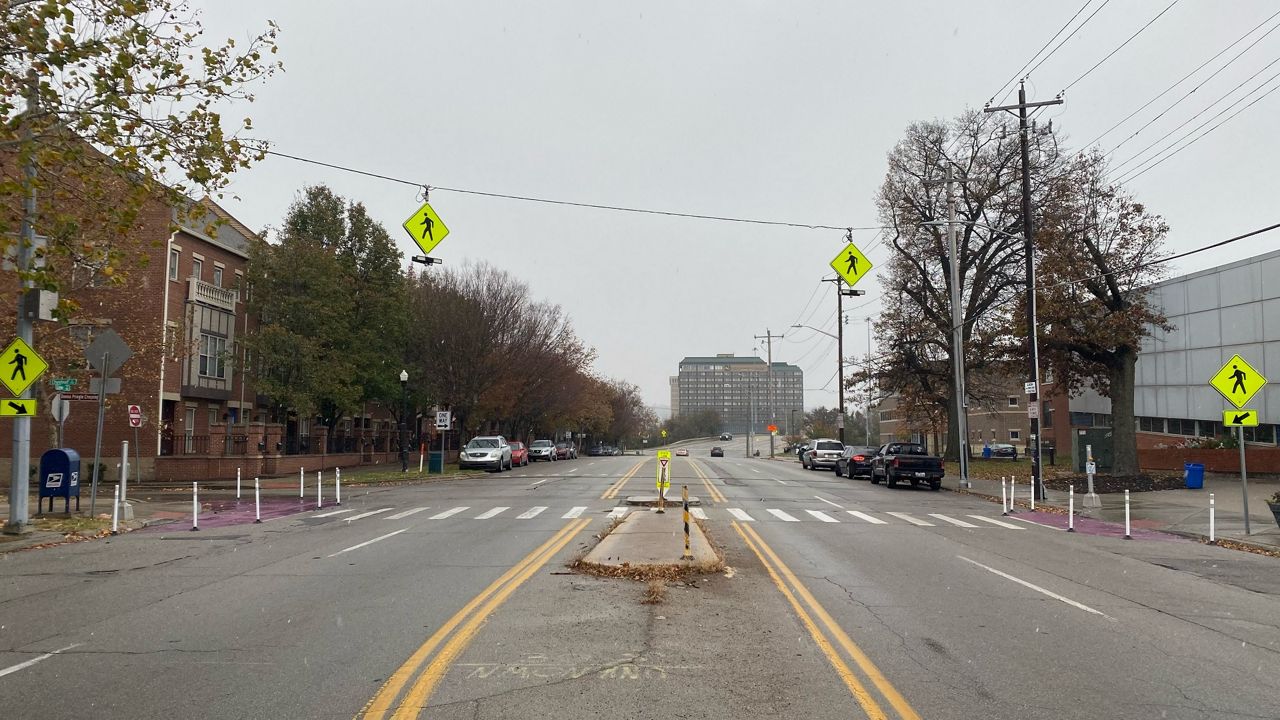CINCINNATI — Noah O’Brien has lived in Cincinnati’s West End for over a decade. During that time, he feels the neighborhood’s business district along Linn Street has served as anything but that.
Featuring up to seven lanes in places, the roadway has very few retail stores, pharmacies, grocery stores, and laundromats. There’s only one sit-down restaurant along that 1.4-mile stretch of Linn Street.
It’s been an ongoing problem for the past two decades, O’Brien said. He mentioned storefronts in the business district built with the CityWest development more than 20 years ago that still have never had a tenant.
“They still have the original gravel floors,” he said.
But O’Brien and other members of the community council have new hopes for their business district now that there are plans for a “complete street” redesign of Linn Street.
What You Need To Know
- The city of Cincinnati is using 'complete streets' concepts to come up with a design plan for Linn Street in West End
- Complete streets design aims to make major neighborhood roadways more focused on utility for residents
- The design focuses on areas ranging from pedestrian and bicycle safety to aesthetics and creating a neighborhood feel
- City Council is considering a policy that would require the Department of Transportation and Engineering to include these design considerations on all major projects
The complete streets movement places an emphasis on people-first road design. Through the process, traffic engineers focus on the safe movement of people through an area, rather than getting cars and other motorized vehicles through there as quickly as possible.
These designs include engineering features such as protected bike lanes, bus lanes, bump-outs, expanded sidewalks, and other traffic-calming improvements. But they also look for more creative upgrades, such as adding trees or other design features to give streetscapes more of a community feel.
O’Brien hopes improving safety and removing the “freeway-like feel” of Linn Street encourage businesses to open in the area. The 42-year-old said addressing poverty and violent crime in the neighborhood are other keys to reaching that goal.
“This is supposed to be our business district, but it doesn’t feel like it,” added O’Brien, the vice president of the West End Community Council. “It often feels like a highway down the center of the community for the sole purpose of moving cars up and down with almost no businesses.”
Earlier this year, the city of Cincinnati received a $20 million RAISE grant from the federal government to help fund the major infrastructure project. It extends from Linn Street through W. Eighth and State streets in Lower Price Hill.
“This large investment in improving the safety and aesthetic qualities of Linn Street will bring our community closer together,” O’Brien said. “We’ll all use the sidewalks and bike lanes more, which increases the viability of future local businesses along Linn Street.”
A new push for complete streets across Cincinnati
The Linn Street proposal is still early in the development phase. But on Wednesday, Cincinnati City Council took steps toward ensuring there’ll be similar projects in the future by introducing the “Complete Streets Ordinance.”
Authored by Council member Mark Jeffreys, the ordinance would make the city consider traffic calming measures and pedestrian safety tools for every road rehabilitation project.
Through the new emphasis on complete streets policy, the city will be able to “right wrongs” from decades ago, Jeffreys said. He added that the expansion of the expressway system tore apart once-thriving neighborhoods and businesses districts such as the one in the West End.
Jeffreys has been working with DOTE, the city’s legal department and pedestrian safety advocates on this issue for the past 10 months. He credited Council members Meeka Owens and Greg Landsman for their involvement.

The ordinance will go before committee next week and then be for a vote of full City Council on Wednesday, Nov. 23.
“We have a different vision for our city grounded in the belief system that we should design our streets for people first, and especially for people who live in that neighborhood,” Jeffreys said. “A belief that we should build a city where people have the freedom to walk safely with their family to a neighborhood park, recreation center or library.”
The city’s Department of Transportation and Engineering (DOTE) engineers started using complete streets ideas in its designs several years ago, according to Dir. John Brazina. DOTE is using similar concepts to right-size Beekman Street in South Cumminsville, and Glenway, Warsaw and Harrison streets on the west side.
While complete streets concepts are already in use, the ordinance would codify them into the decision-making and planning processes, Jeffreys said.
Jeffreys believes further aligning with the complete streets policy will also help the city in its efforts to attract future federal grant dollars to support neighborhood-centric transportation projects.
On Nov. 10, the board for the Ohio-Kentucky-Indiana Regional Council of Governments (OKI) adopted a complete streets policy of its own. It requires applicants for grants to consider those concepts when applying for grant funds.
A federal agency, OKI has final say on all federal dollars spent in region on surface transportation projects
Jeffreys is an OKI Board Member.
Complete streets helping to complete neighborhoods
Before Wednesday’s City Council meeting, Jeffreys held a press conference at Lincoln Recreation Center on Linn Street to announce the ordinance. Joining him were city leaders and representatives from several organizations, including Tri-State Trails. The group discussed what the community benefits of complete streets design.
Alena Speed, executive director of the organization Homebase Cincinnati, said improved aesthetics and better functioning streets will make neighborhoods more attractive to businesses and customers. Pedestrian safety is also important to local Community Development Corporations, she added.
“We have to do more to think about the people in our neighborhoods,” Speed said.
Proponents of this type of design also see it to take local environmental action. Local environmental organizations have wanted this ordinance for years, said Nathan Alley, with Ohio Sierra Club, stating that the ordinance is something. He views it as a tool for helping Cincinnati prepare Cincinnati for the long-term effects of climate change.
Alley mentioned that creating travel corridors that are less car-focused streets will inspire people to walk more or ride a bike. That will not only reduce the city’s carbon footprint, but it will also improve the local air quality and reduce risks of health conditions like asthma, he added. He noted these designs can also help with stormwater runoff, which should reduce sewer backups and overland flooding.
“This is a matter of equity, environmental justice and making streets (more) accessible,” Alley added.
Safety comes first
While improved air quality and better business options will be great, for O’Brien, it all comes back to safety.
In 2020, beloved West End resident Donna Pringle suffered fatal injuries after a driver struck her on Linn Street. The 67-year-old was walking in a crosswalk near Chestnut Street, across the street from the rec center where Wednesday’s press conference took place.

This year, traffic collisions have killed 30 people in Cincinnati, six of them being outside of an automobile, per data from the city.
Linn Street experienced several serious pedestrian-involved crashes over the years. In 2019, DOTE marked it dangerous as part of its Cincinnati Vision Zero review plan. As part of Vision Zero, the city installs traffic calming tools, like speed cushions, in known high-crash areas. The goal is to stop drivers from killing or severely injuring pedestrians.
In response to Pringle’s death, DOTE installed curb extensions on Linn Street to shorten the crosswalk distance in front of the recreation center, and plans to install speed cushions in this area in early 2023.
Jeffreys called Vision Zero a complement to the complete streets approach.
Planning for next steps for Linn Street is still months off, Brazina said. The department is working with the federal government on the timeline, and the design is still in the planning stages.
Early proposals have focused on enhancing the roadway experience for pedestrians, bicyclists, bus riders and motorists. Some of the suggested improvements include shrinking of traffic lanes, expanding sidewalks and adding new landscaping. One of the six current options includes a tree-lined elevated bike lane in the middle of the road.
O’Brien said he looks forward to the day he can ride bikes down Linn Street with his wife, Lizzy Chirlin, and their 4-month-old son, Emmett. That’s something they don’t feel safe doing right now.
Jeffreys said complete streets planning has transformative potential, but those types of changes won’t happen overnight. These projects take “years, not months,” he said.
While he knows shovels in the ground are still a way off, O’Brien stressed optimism about the future of Linn Street.
“This community is still devastated from the death of Donna Pringle,” he said. “It’s (going to be) hard not to think of Donna and her legacy as we work on these critically important improvements to design and safety on Linn Street.”
Editor's Note: A quote in this story was previously mistyped. The story has been updated to reflect the correct statement. (Nov. 25, 2022)



